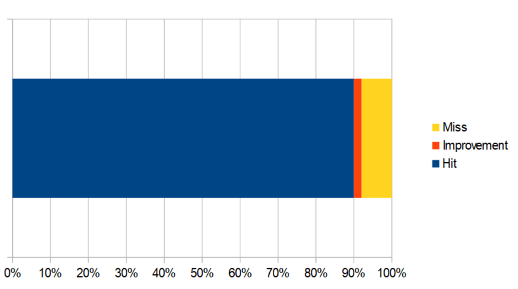When a 2% Increase in Cache Hit Rate Can Save You 20% in Data Center Costs
One of the key differences with Fastly is the ability to Cache the Uncacheable. You can programmatically purging content so fast that we even have customers caching API read calls. The cache holds onto content longer rather than passing to origin on “uncacheable” content.
When the data changes, your system makes an API call to Fastly to purge of what changed. Purges remove content from the Cache with a 150ms mean purge time. This is great for those items you know will change, but don’t know when. Other CDNs try to tell you this is “dynamic content” and that they won’t cache it because they can’t purge it fast enough. Items like inventory quantities, sporting game scores and flight arrival times. Why hammer your origin with every one of these requests? Instead cache and purge globally when it changes.
Visibility & Control
Even if you don’t decide to cache “event driven content”, Fastly’s visibility and control allows you to tune and watch your CHR near real time. Made a mistake and your CHR dropped? Roll back to your prior configuration, with a mean global deploy time of 13 seconds. You now have time to relax and figure out a different tune.
Deploying configurations with other CDNs globally can take hours. And if the logging takes 4 plus hours to get to you, any mistake can make for hours of damage. An hour or two to deploy, several hours to get log summaries, and then once you’ve figured out you did something wrong – you now have hours for the fixed configuration to deploy.
Small Changes
But what happens if your tuning only gets you a 2% increase? From the overall picture of total traffic it might not seem like much. But from the Data Center (your “origin”) it could create tremendous cost savings.
Take for example the following scenario. A firm has a 90% cache hit rate with their existing legacy CDN. These examples and charts are for illustration purposes only, but the math proves itself out. The view of the overall content being sent out is:

But take this from the view of inside the Data Center. The 10% not being cached is basically 100% of the work/traffic the Data Center is seeing:

Remember – this traffic is content served by servers that you have to power, cool, and maintain. There is often software licensing involved and IT hours to support. This is a real cost, real money already being spent.
What Does It All Mean?
So what does that 2% increase in CHR (Cache Hit Rate) look like? From the overall data being served, it really doesn’t look like much. The small red bar below is that 2% overall increase, additional content being served by the CDN:

But from the Data Center the impact is huge. The 2% increase in caching can translate into a 20% reduction in the traffic hitting your Data Center:

What if you could go from 60% cached to 80%? A 50% reduction at the Data Center! Do the math . . . it’s pretty impressive. Even going from 90% cached to 91% could possibly offset the CDN costs. You’d be giving your end users better performance while at the same time freeing up valuable resources in the Data Center.
If you are thinking of selecting (or changing to) a modern CDN you need to rethink how you quantify ROI. A modern CDN can improve your End User Experience and also make your IT Staff very happy . . . and save you some serious $$$.
Note from the editor: These are the views and opinions of Eric Burns. They are not those of Fastly, its staff, investors or stock holders